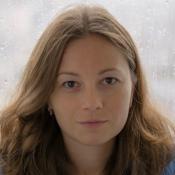Theoretical seminar | 15 July 2020
Online

Understanding and control of light-matter interactions have been central to the development of quantum communications. A promising approach to study of such interactions is based on ensemble of neutral atoms. Manipulations with density and spatial organization of atoms in a system can bring fascinating results, which are interesting for quantum information applications.
In this talk, I will discuss light propagation in an optically dense atomic ensemble under conditions of electromagnetically-induced transparency (EIT). I will explain the ideas of slowing-down light in an atomic system and demonstrate our recent experimental results on quantum memory in free space [1,2]. Moreover, I will explain how the light-atom interaction can be used to generate a single collective excitation based on a protocol developed by L.-M. Duan, M.D. Lukin, J.I. Cirac and P. Zoller (DLCZ) [3]. In this part, I will present our experimental results on a waveguide-coupled single collective atomic excitation which was created in an atomic array trapped near an optical nanofiber [4].
[1] P. Vernaz-Gris, K. Huang, M. Cao, A.S. Sheremet, and J. Laurat, Highly-efficient quantum memory for polarization qubits in a spatially-multiplexed cold atomic ensemble, Nat. Comm. 9, 363 (2018);
[2] M. Cao, F. Hoffet, S. Qiu, A.S. Sheremet, and J. Laurat, Efficient reversible entanglement transfer between light and quantum memories, submitted in PRL (2020);
[3] L.-M. Duan, M.D. Lukin, J.I. Cirac, and P. Zoller, Long-distance quantum communication with atomic ensembles and linear optics, Nature 414, 414-418 (2001);
[4] N.V. Corzo, J. Raskop, A. Chandra, A.S. Sheremet, B. Gouraud, and J. Laurat, Waveguide-coupled single collective excitation of atomic arrays, Nature 566, 359-362 (2019).
